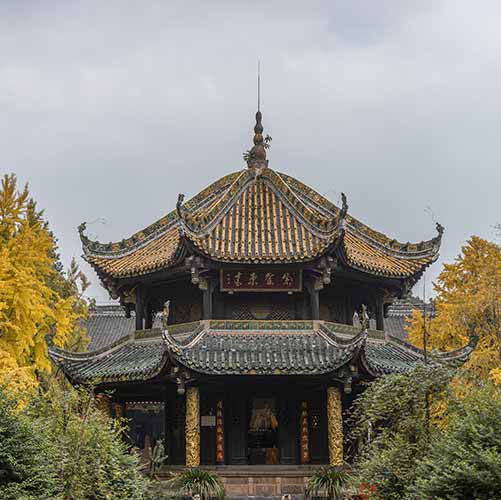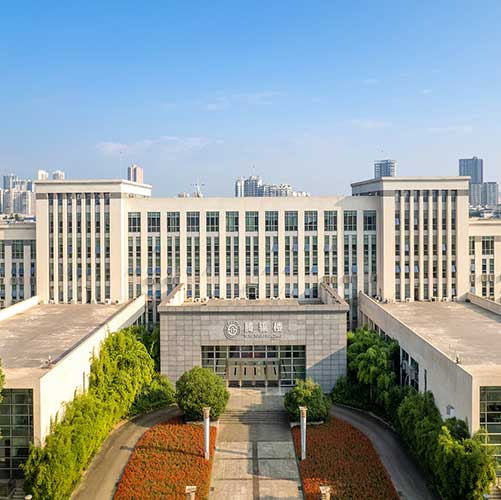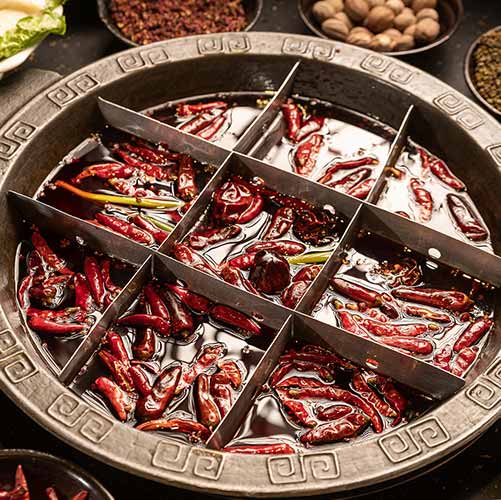
Home of Pandas
Chengdu is the capital city of Sichuan Province. Located in southwest China, the city is the region's center of logistics, trade, finance, science and technology, culture and education and its transportation and communication hub.
Known as “the land of abundance”, Chengdu is among the earliest developed cities in China with long-lasting prosperity. For most of its history since its founding thousands of years ago, Chengdu has remained prosperous and thriving, allowing it to be one of the more affluent regions in the country.
The city is also home to the world’s largest base of giant panda breeding. You cannot miss it if you fancy a closer look at these cute animals.
Historical Monuments
Landmarks
Natural Scenery
Universities
Delicacies
Entertainment
Liu’s Manor in Dayi County
Liu’s Manor in Dayi County, consisting of five mansions and the ancestral residence of the Liu family constructed successively by Liu Wencai, a landlord in Sichuan, and his brothers in modern times, is the largest manor house complex in the southwest.
Qingyang Temple
Qingyang Temple, the largest Taoist temple in the southwest, is a famous heritage tourist attraction and sightseeing spot nationwide. Legend has it that the temple is the place where Laozi set to meet his disciple Yin Xi for the transmission of Dao De Jing (Tao Te Ching).
Tianfu Square
Tianfu Square, located in the heart of Chengdu, was once the site of the imperial city. It is the city's economic, cultural and commercial center and its important transportation hub.
Kuanzhai Xiangzi (Kuanzhai Alley)
Kuanzhai Xiangzi is a historic and cultural area in Chengdu, consisting of three ancient east-west streets. The neighbourhood was originally the residential area for the Eight Banners in the Qing dynasty. In 2008, it was renovated into a modern commercial pedestrian street.
Chunxi Road
Chunxi Road, the most thriving high street in Chengdu, is also one of the most famous high streets across the country. It features a wide variety of brands and many well-established and long-running shopping malls.
Dujiangyan
Dujiangyan, or the Dujiangyan irrigation system, is a large ancient water conservancy project and is still in use today. Over 2,000 years and more, it has gone through numerous renovations and played a crucial role. The system was mainly designed to divert water for irrigation. It also offers a range of other functions, including flood control, silt removal, water transportation, and urban water supply.
Qingcheng Shan
Qingcheng Shan, one of the birthplaces of Taoism, enjoys fame as a place full of history and culture and is a national park of China. It was listed as a World Cultural Heritage in 2000, together with the Dujiangyan Irrigation System.
Huanhuaxi Park
Huanhuaxi Park constitutes the core area of the Huanhuaxi Historic and Cultural Scenic Area. It is the largest open urban forest park in Chengdu with the most investment to date, which was rated the city’s only five-star park.
University of Electronic Science and Technology of China
University of Electronic Science and Technology of China (UESTC) is situated in Chengdu. UESTC was founded by the merging of the electrical engineering departments of 3 top engineering universities in China in 1956. It became one of the national key universities in 1960. It was selected as one of the national "Project 211" (Top 100) universities in 1997 and the national "Project 985" (Top 39) universities in 2001. In 2017, the University was selected as one of "Double First-Class" universities (Top 36 in China).
Southwest Jiaotong University
Founded in 1896 as the “Imperial Chinese Railway College”, Southwest Jiaotong University (SWJTU) is one of the earliest institutions of higher engineering education in China. It has become known as “the cradle of railway engineers in China”.
Southwestern University of Finance and Economics
Southwestern University of Finance and Economics, known as SWUFE, is located in Chengdu, the capital city of Sichuan province. Chengdu is the economic and trade center in Western China, as well as transportation and communication hub. The lovely giant panda is one of the reasons why Chengdu attracts so many travelers.
Dandan Noodles
Dandan noodles are a speciality snack from Zigong, Sichuan. The noodles are fine and smooth, often seasoned and topped with a variety of condiments and ingredients, including red pepper oil, sesame sauce, minced meat, Sichuan winter vegetables, peanut flakes or powder, pepper powder, red soy sauce, minced garlic, pea tips and chopped spring onions.
Mala Hotpot
Mala hotpot originated in the region of Sichuan and Chongqing. Its name, literally meaning numbing and spicy, is taken from the feeling in the mouth after taking the dish.
Hongyou Chaoshou
Hongyou chaoshou is a snack that originated in Sichuan. The Chaoshou can be served with hongyou dressing (chili oil sauce) or with optional spring onion, shredded egg and laver.
Chengdu Research Base of Giant Panda Breeding
The Chengdu Research Base of Giant Panda Breeding is not only a research institution but also a tourist destination. It serves for the research and breeding of giant pandas, public education and educational tourism. It is also a non-profit institution specializing in research, breeding, conservation education, and educational tourism concerning endangered wild animals.
Sanxingdui Museum
The Sanxingdui Ruins site, discovered in the late 1920s, is the largest, longest-lasting and most culturally abundant ancient cultural site found in southwestern China to date. The Museum displays thousands of precious cultural relics, such as the bronze standing figure, the bronze sacred tree, bronze masks, gold masks, the gold sceptre and ivories.
Shufeng Yayun Theater
Shufeng Yayun Theater presents a dazzling performance of Sichuan Opera every day, including the “hand shadow show” performed through lighting and hand movements, and the “face changing”, a famous component of Sichuan Opera.



















